2016 Kia Cadenza Vs 2016 Nissan Maxima

The Kia Cadenza and Nissan Maxima are a couple of in-betweeners.
Stuck in a grey area with no real definition, they’re bigger than most midsize sedans, but not quite as large as full-size cars. Better equipped and nicer to drive than the average family sedan, neither are quite as upscale as a traditional luxury car.
SEE ALSO: Kia Cadenza vs Lexus ES 350
Think of the Cadenza and Maxima as premium family sedans. Two cars designed for customers who want more, but aren’t ready to dive into the world of big-buck luxury cars.
Two Different Approaches
Despite how similar the Kia and Nissan may appear on paper, they are very different in execution. Don’t judge a book by its cover right? Well, with the Cadenza and Maxima, it’s OK to do just that.
The way these cars are styled reflects their nature. The Maxima features a far more aggressive, sporty style while the Cadenza has a sophisticated, mature look. Inside, the Maxima focuses on the driver and performance, highlighted by a squared off steering wheel and angled center console. The Cadenza, on the other hand, has a more traditional flat dashboard and a large, partially wood-covered steering wheel.
Nothing in the Kia is offensive, but it isn’t all that exciting either. The Maxima has the decidedly more modern interior, which makes sense because it’s the newer car. The buttons and switches feel of higher quality and there’s a more cohesive overall design. The steering wheel is the nicer to grip of the two and the Nissan allows more customization of the car’s functions through the menu screens.
Big V6 Power
Both cars come equipped with powerful V6 engines – a 300-hp 3.5-liter unit in the Maxima and a 293-hp 3.3-liter powerplant in the Cadenza. Despite similar output numbers, the two engines behave very differently. The Maxima’s engine is smoother and more responsive than the Kia’s — a lot of which has to do with the continuously variable transmission. Paired to the 3.5-liter engine, this may be the best use of a CVT anywhere on the market today.
The Maxima’s engine also sounds better and is louder under hard acceleration. The 3.3-liter V6 in the Cadenza is still a good engine and at higher rpms, it really comes alive. The problem is it’s hampered by a slow reacting six-speed automatic transmission that takes its sweet time to change gears. Driving with the paddle shifters improves things quite a bit but I don’t see many Cadenza owners driving around using the steering wheel-mounted paddles all that often.
And despite being faster and more powerful, the Maxima boasts a higher fuel economy rating of 22 mpg city and 30 mpg highway compared to the Cadenza’s ratings of 19 mpg city and 28 mpg highway. During my time with the cars, I was able to average 24.5 mpg in the Maxima compared to 22.8 mpg in the Cadenza.
Surprisingly Capable Performer
There’s an issue with all of the Maxima’s instant, responsive power though, and that is torque steer. The Nissan is constantly breaking the front tires loose when powering out of corners – a by-product of big horsepower front-wheel-drive cars, although the similarly powerful Cadenza is virtually absent of any torque steer.
Handling is another area in which the Maxima holds an edge, as it corners quite well for such a large family car. It’s not a sports car or four-door sports car or whatever Nissan wants to call it, but for a front-wheel drive sedan, it turns in a fluid, controlled manner.
Lighter than the Cadenza by about 200 pounds, the weight difference between the two cars can really be felt when changing direction. Plus, there’s a sport mode in the Maxima that doesn’t just make the engine and transmission more responsive, it also stiffens up the steering. And if even more performance is needed in a Maxima, there’s the sportier SR model with larger tires and a sportier suspension setup.
Compare Specs
| Vehicle | Kia Cadenza | Advantage | Nissan Maxima |
|---|---|---|---|
| Engine | 3.3 L V6 | - | 3.5 L V6 |
| Horsepower | 293 HP | Maxima | 300 HP |
| Torque | 255 lb-ft. | Maxima | 261 lb-ft. |
| Transmission | Six-Speed Automatic | - | CVT |
| Weight | 3,785 lbs. | Maxima | 3,593 lbs. |
| Rear Legroom | 36.8-inches | Cadenza | 34.2-inches |
| Trunk Capacity | 15.9 cubic feet | Cadenza | 14.3 cubic feet |
| Fuel Economy (US) | 19 MPG city, 28 MPG hwy | Maxima | 20 MPG city, 30 MPG hwy |
| Fuel Economy (CDN) | 12.7 L/100 km city, 8.4 L/100 km hwy | Maxima | 10.9 L/100 km city, 7.8 L/100 km hwy |
| Observed Fuel Economy | 22.8 MPG | Maxima | 24.5 MPG |
| Starting Price(US) | $33,840 | - | $33,345 |
| Starting Price(CDN) | $39,545 | Maxima | $37,650 |
| As Tested Price(US) | $44,950 | Maxima | $40,795 |
| As Tested Price(CDN) | $47,140 | Maxima | $45,050 |
A Serene Cruiser
The Cadenza may be lacking some of the Maxima’s engagement and cornering grip, but where it shines is in refinement. The Cadenza does a better job isolating occupants from outside noises and vibrations. It has a more traditional, large premium car feel to it.
SEE ALSO: 2015 Hyundai Genesis vs 2016 Nissan Maxima
Inside, the focus on occupants continues, as the slightly longer Cadenza allows for an extra 2.6 inches of rear legroom. The rear seat cushion is incredibly comfortable and headroom is a bit more generous than what’s found in the Maxima. Trunk space is also larger in the Kia, offering 15.9 cubic feet of space compared to the Nissan’s 14.3 cubic feet. The Maxima, however, features split folding rear seats with release straps in the trunk. The Cadenza’s rear seats only fold down a singular unit.
The View Behind the Wheel
Neither car offers much headroom for the driver, with the Cadenza feeling less cranium compliant of the two. Plus, the Kia’s dashboard is set lower, which is great for shorter drivers, but taller ones may feel like they are perched on top of the car.
On the question of value, both cars can be equipped nearly the same with features like ventilated front seats, adaptive cruise control, dual pane moon roofs and heated steering wheels. The Cadenza includes options not found in the Maxima like lane departure warning and power folding mirrors, while the Cadenza lacks the Maxima’s 360-degree parking cameras and a sport mode.
All of these features of course come at a cost and a fully loaded Cadenza Limited clocks in at $44,950 in the U.S. after destination charges. Surprisingly, the Maxima is the cheaper car as the fully loaded Platinum comes in at $40,795. And a little icing on the cake is the fact the Maxima earns a Top Safety Pick+ rating from the IIHS while the Cadenza does not.
The Verdict: 2016 Kia Cadenza vs 2016 Nissan Maxima
It’s not a big surprise that the newer, more modern Maxima is the better choice. Cheaper to buy, better on gas and more fun to drive, it’s a great in-betweener if you want a bit of everything. But, its reign may be short lived, as there’s an all-new Cadenza lurking around the corner.

A 20+ year industry veteran, Mike rejoins the AutoGuide team as the Managing Editor. He started his career at a young age working at dealerships, car rentals, and used car advertisers. He then found his true passion, automotive writing. After contributing to multiple websites for several years, he spent the next six years working at the head office of an automotive OEM, before returning back to the field he loves. He is a member of the Automobile Journalists Association of Canada (AJAC), and Midwest Automotive Media Association (MAMA). He's the recipient of a feature writing of the year award and multiple video of the year awards.
More by Mike Schlee



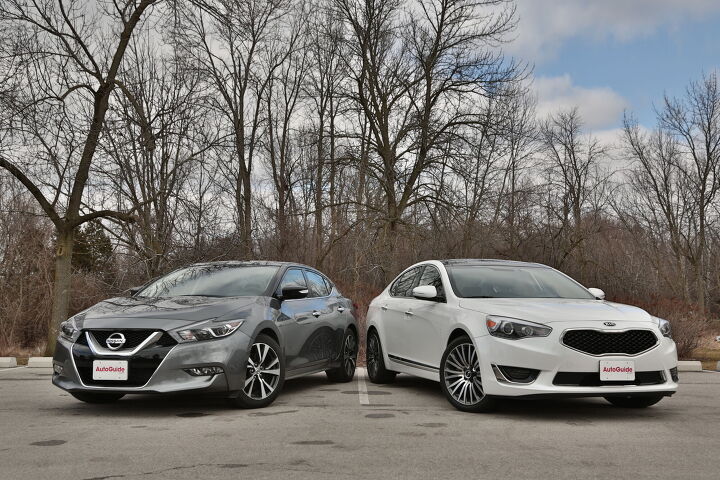
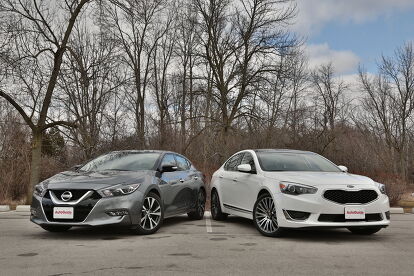


























































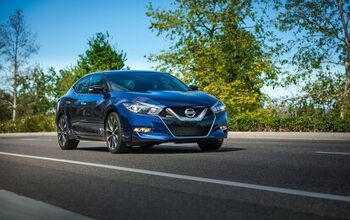
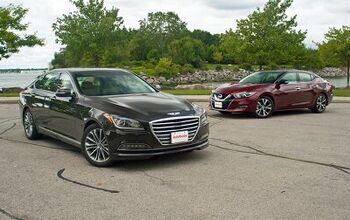
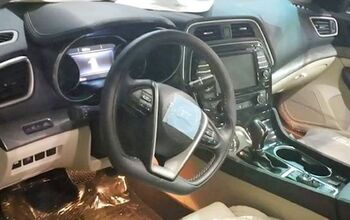

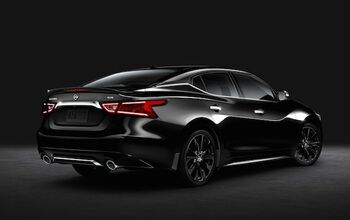






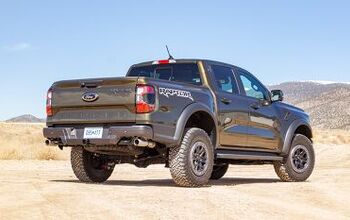
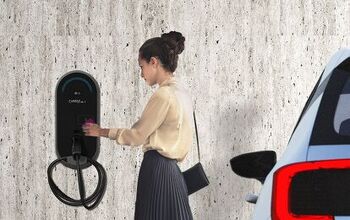

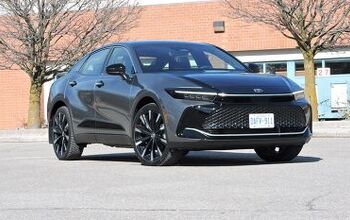
Comments
Join the conversation
My wife has a Cadenza premium (no adaptive cruise or land deperture warning and 18" wheels) and it is a very comfortable car which a lot of nice details. I agree with you though that it's not sporting at all. It's a fantastic highway cruiser though and she averages around 29-31 on cross country journeys, but locally it's about the same as your average - 22.5. Of these two I'd probably get a Maxima SR, but my wife prefers comfort over sport and she Loves her Kia.